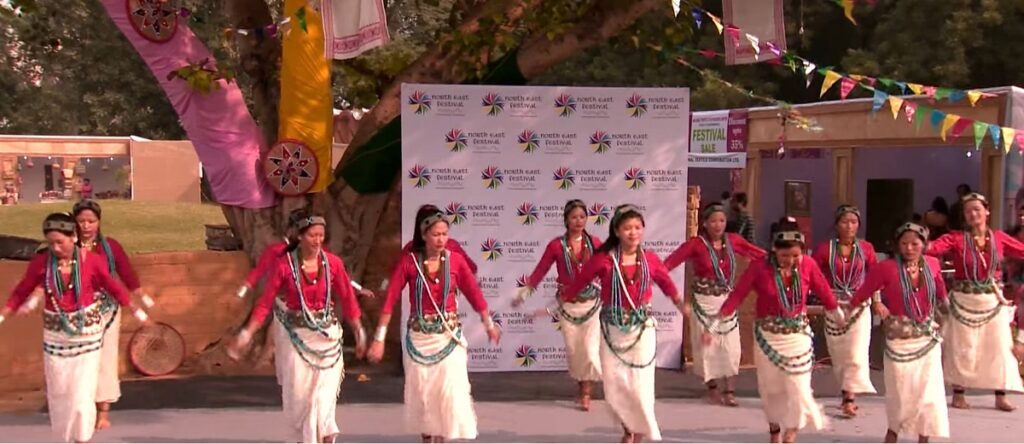Buiya is a popular dance form that originated in the beautiful north-eastern state of Arunachal Pradesh. This folk dance is an attraction at all tribal festivals in the state. The unique formations combined with the beat of different instruments make buiya folk dance an exciting show to watch.

Purpose of The Buiya Dance
The tribe to which Buiya folk dance belongs is known as the Digaru Mishmis. The Digaru Mishmi women and men perform the dance. Buiya is mostly performed with family members and other close relatives. Entertainment is the main purpose behind this dance. Often performed after a grand feast or in some family gathering, the Buiya dance is a joyful dance that bonds the people.
Buiya dance is also performed in multiple festivals like Tazampu, Duiya, and, Tanuya. On such occasions, the dance form has a different meaning to it. It is for the prosperity and well-being of the ones dancing and also a pray for his household.
Buiya Dance Performance
The passage going from the front to the rear end of the house is the Buiya dance stage. The performers form a straight line with one dancer positioned behind the other. This unique formation makes this dance form special.
As the music plays and the gong beats, buiya dancers start moving from the front end of the passage to the rear. The movements are effortless, with the right foot put forward to move ahead by one step. Then the left leg is supported on the left heel with the knee slightly bent. These movements are repeated till the end of the passage is reached.
Another movement involves skipping a step. This is slightly difficult and is usually seen during the performances at festivals. The women make small graceful jumps to move forward. The men, on the other hand, perform higher jumps, which are much faster as compared to the movements of the women.
Buiya folk dance can be performed by men and women of all ages. The elderly are often the spectators while the young men and women grace the stage.
Instruments Used in Buiya dance
Buiya dance is usually performed along with the beats of the drum and gong. Some performers also play the cymbal. First, it commences with slow rhythms and gradually picks up pace. Sometimes the dance is performed without any music also. Songs may be sung solo or in a chorus.
Attire Used For The Dance
Buiya dance does not have any particular dress code. The typical tribal wear is what the performers are seen wearing. The men dress in a jacket with no sleeves on the top and a loincloth on the bottom. The look is completed with a turban on the head and some jewellery around the neck and wrists.
The women wear a long wrap skirt and a blouse. Another smaller skirt is wrapped over the long skirt. A side bag is also hung on their shoulders. Many different types of jewellery are seen beautifying the look.

Pingback: All Folk Dances of India - Auchitya
Pingback: Folk Dances of Arunachal Pradesh - Auchitya
Pingback: All Folk Dances of India - Auchitya
Pingback: All Folk Dances of India - Statewise Complete List - Auchitya